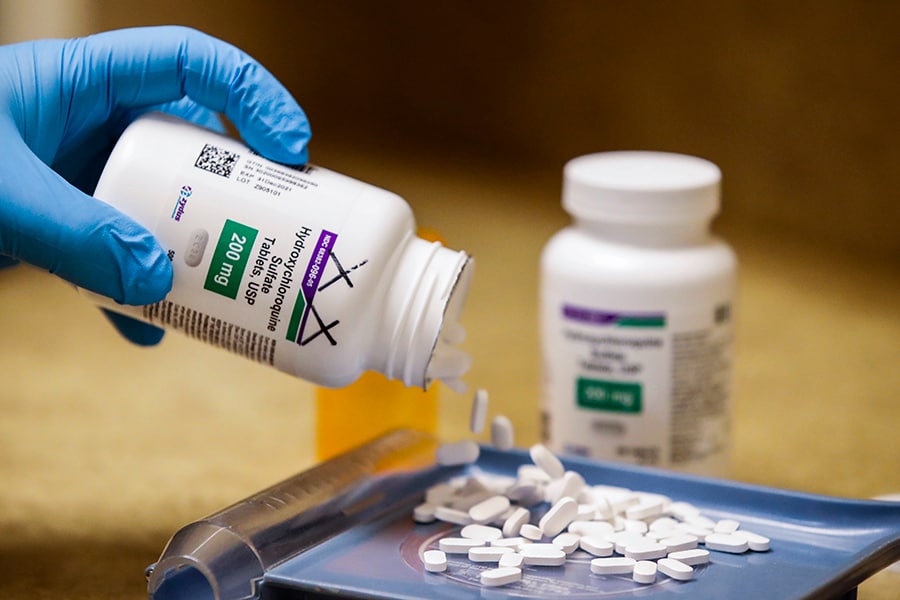
Hydroxychloroquine did not prevent Covid-19 infections, study finds
India had lifted its ban on export of the malaria drug, after US President Donald Trump threatened 'retaliation'
 Image: GEORGE FREY/AFP via Getty Images
Image: GEORGE FREY/AFP via Getty Images
The malaria drug hydroxychloroquine did not prevent COVID-19 in a rigorous study of 821 people who had been exposed to patients infected with the virus, researchers from the University of Minnesota and Canada are reporting Wednesday.
The study was the first controlled clinical trial of hydroxychloroquine, a drug that President Donald Trump has repeatedly promoted and recently taken himself. Conducted in the United States and Canada, this trial was the first to test whether the drug could prevent illness in people who have been exposed to the coronavirus. This type of study, in which patients are picked at random to receive either an experimental treatment or a placebo, is considered the most reliable way to measure the safety and effectiveness of a drug. The participants were health care workers and people who had been exposed at home to ill spouses, partners or parents.
“The take-home message for the general public is that if you’re exposed to someone with COVID-19, hydroxychloroquine is not an effective post-exposure, preventive therapy,” the lead author of the study, Dr. David R. Boulware, from the University of Minnesota, said in an interview.
The results are being published in The New England Journal of Medicine.
“If we could find something that would ameliorate infection, block it or make it milder after a solid exposure, that would be quite wonderful,” said Dr. Judith Feinberg, vice chairwoman for research in medicine at West Virginia University. “What we want to do is limit the number of cases. There was great hope riding on this.”
©2019 New York Times News Service




